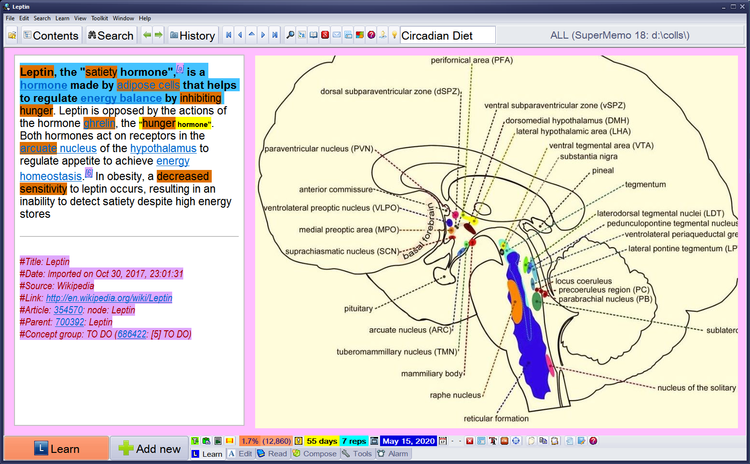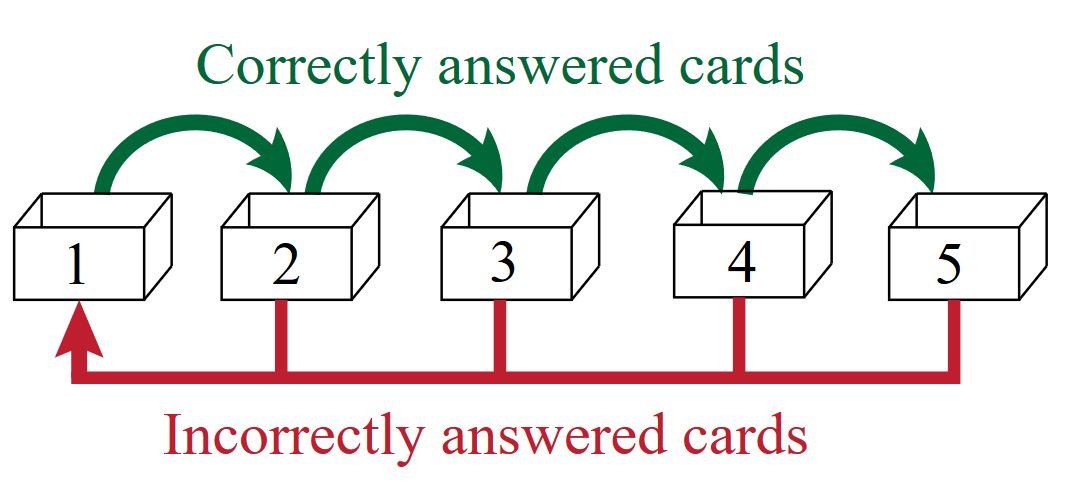SuperMemo's Incremental Reading: Explained

SuperMemo/Anki = Spacing your remembering; Incremental Reading = Spacing your reading
Meaning of Incremental Reading in SuperMemo’s Sense
IR is about:
I. Reading the learning material from start to finish with a spaced schedule
II. Re-reading the extracts (highlighted material) with another spaced schedule of its own
III. Knowledge crystallization: Extracts –> Clozed/Q&A items (Incremental Extract Processing)
Repeat the above steps for different reading material
IR probably isn’t what you have in mind
“Incremental” in “Incremental Reading” refers to the reading schedule, just like any clozed/Q&A flashcard’s. The reading schedule means the date when SuperMemo will show this Topic to you. The main focus is that your progress of a particular Topic happens over time (point I above).
For example, when you first read a particular Topic, you finished 50% and pressed “Next”. Then 4 days later, SuperMemo shows it to you again and you complete the remaining 50%. By then you’re done. The alternative (traditional) reading method would be reading from start to finish in one setting, e.g., in one hour. In this case, the time spent on reading is the same but the difference is spanning across 4 days vs. 1 hour.
The intervals between each reading session are ever-expanding, i.e., weeks if not months. For step I, it might take a month to finish reading chapter 1 of a book. For step II, it might take another month until you decide what to do with it Reasons Incremental Extract Processing. Going from step I to step III might take months.
“Reading” in “Incremental Reading” can mean two things:
A. Original reading material (step I above)
B. Extracts produced from step A (incremental re-reading; step II above)
Why read this way?
Generally speaking, any spaced schedule aids learning, deepens understanding and promotes memory retention. Consider how one SuperMemo user puts it:
You are gradually digesting the article into smaller and smaller pieces.
When those pieces have become truly bite-size, you can convert them to real flash-cards. […] When the nugget of information is converted to a flash card, you can “Forget” that piece of text: you’ve digested it all the way down into facts that you won’t be forgetting!
I use the incremental reading feature for reading long, complicated documents, and it’s world’s better than any other method I’ve tried. (And with a PhD in Mathematics, I’ve certainly studied my share of documents!) It forces you to read the important bits very carefully–but still saves you time by helping you to ignore the less important bits. I can’t recommend it highly enough. In fact, I’d give my left arm to get a Palm application which supports incremental reading!
For further explanation please read Three Secret Sauces Behind the Magic of SuperMemo’s Incremental Reading
IR is all about the spaced reading schedule
“Reading thousands of articles at the same time without getting lost.”
IR is touted like this. You might be confused by the possibility (or absurdity) of such idea. In my opinion, what is more significant is not the sheer number of reading material processed, but the reading schedule that enables such possibility. I believe this spaced reading schedule is the biggest and most secretive sauce behind the magic of IR. You’re potentially refreshing your memory for thousands of different material in one day: It could be a few paragraphs of book A, a quote from book B, an equation from Book C.
For example, in the outstanding queue, if you isolate the reading and reviewing material from the same source, it might be:
March 1st: chapter 1: First reading; made some extracts; finished 40%
March 2nd: Reviewing extracts from chapter 1 (1st re-reading; step II above)
April 5th: Reviewing extracts from chapter 1 (2nd re-reading; step II above)
April 12th: chapter 1: Continue reading; picking up where you left off (40% reading point) a month ago
So what happens on March 3rd, 4th, April 10th and so on, all the days that no reading and reviewing is scheduled for this source? You’re doing the same for other material. Since you’re doing this for every source, you benefit from the spacing effect for every learning material.
Update: for graphic illustration above please see the Graphic Illustration of Incremental Writing of Incremental Writing: No More Writer’s Blocks.
If you accept the premise that spaced reading, rather than massed reading, is a better strategy, then how do you implement it? This is where SuperMemo comes in.
Automatic Spaced Reading Scheduling in SuperMemo
Since all the reading material and the extracts have to be scheduled in a spaced manner, SuperMemo takes care of all the scheduling so you don’t have to calculate and keep track of them.
If you’ve used Anki, you can think of IR as pasting a reading material to the Front side and leaving the Back blank. You may consider this one big “reading card”: your job isn’t to recall any answer but to read it and highlight (by extracting) important parts. After reading (whether finish or not), you press “Next” to move on. Like any other flashcards, it has its own schedule for the next review date.
Manual Incremental Reading = Using the Leitner System
It’s essentially impossible to do IR without SuperMemo. You need a knowledge management software like SuperMemo to keep track of all the review dates for the reading material and the subsequent extracts produced. Without SuperMemo, it’s difficult to do so even for just one book. Consider this: for a given book, you have made 50 extracts. This means 50 review dates to keep track of. For each extract, you make one Q&A (step III). It means 50 more review dates. Manual IR is more difficult than normal paper flashcards because it will generate extracts to keep track of along the way.
Such busywork is extremely exhausting; you’re wasting mental energy on these trivial matters. Your reading material will grow and quickly it won’t be manageable. Why calculate the dates yourself when you can use a software to do it for you? You’re wasting time calculating the intervals when you could spend it on actual learning. Doing IR outside of SuperMemo is a lot like doing paper flashcards with the Leitner System. You can but you just wouldn’t. It is possible to keep track of thousands of flashcards, but using a Spaced Repetition Software like SuperMemo or Anki just makes the whole review process immensely more convenient.

Closing Remarks
In essence, IR is just spacing your reading. This is currently the best video on getting started with IR: Starting with SM Going through the IR Manual.